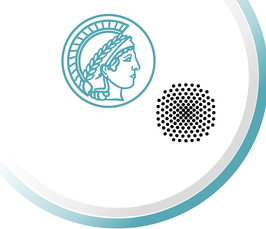When quantum meets clean:the unusual metallic transport in delafossites
Stuttgarter Physikalisches Kolloquium
- Date: Jun 22, 2021
- Time: 04:15 PM (Local Time Germany)
- Speaker: Philip Moll
- EPFL, Switzerland
- Location: MPI-FKF Stuttgart
- Room: online

The layered metals PdCoO2 and PtCoO2 have recently turned into a testbed for ideas of quantum mechanics on the
mesoscopic scale. The conductivity is exclusively due to orbitals in the Pd/Pt layer. These single-electron-metals are
well described by a cylindrical Fermi surface with almost negligible warping that reflects the strong anisotropy of the inplane
to out-of-plane hopping terms. Consistently, a large resistivity anisotropy of pc/pa 5000 is observed and quantum
oscillations match well ab-initio calculations of the Fermi surface. The origin of the novel physical phenomena
discovered in this at first glance trivial metal lies in its extreme cleanliness. The crystals grow as thin platelets virtually
free of defects and, in particular, free of stacking faults unlike many electronically layered materials. Accordingly,
transport mean-free-paths of >20mm at low temperatures in this oxide and coherent interlayer transport below 400K
are routinely observed.
This crystalline perfection, in combination with recent advances in Focused Ion Beam microstructuring, have turned
this material into a testbed of quantum mechanics in the unusual limit of weakly yet coherently coupled layers. I will
focus here on two recent observations, boundary symmetry breaking and h/e oscillations. The first part concerns the
well-known fact that the resistivity tensor in a hexagonal symmetry must be isotropic in the plane perpendicular to the
rotational axis. This property of innite crystals is naturally broken by the nite size of any real crystal, yet boundary
effects are typically undetectable. Here we show by micromachining transport bars in the quasi-ballistic limit that one
can observe and quantify an emergent mesoscale in-plane anisotropy – demonstrating that the electronic symmetry in
the microbars is indeed lowered. The second part concerns the out-of-plane transport in mm-sized pillars. This
previously inaccessible regime of quantum transport shows a necessary breakdown of quasi-classics and a transition
to a new type of quantum coherent transport that should be generic to ultra-clean layered materials. This regime is well
described by transport of fully delocalized electron waves that are transferred from plane-to-plane. The natural area of
this quantum process is given by the atomic interlayer distance, and hence the transport is strongly modulated by the
number of flux quanta between adjacent planes.
mesoscopic scale. The conductivity is exclusively due to orbitals in the Pd/Pt layer. These single-electron-metals are
well described by a cylindrical Fermi surface with almost negligible warping that reflects the strong anisotropy of the inplane
to out-of-plane hopping terms. Consistently, a large resistivity anisotropy of pc/pa 5000 is observed and quantum
oscillations match well ab-initio calculations of the Fermi surface. The origin of the novel physical phenomena
discovered in this at first glance trivial metal lies in its extreme cleanliness. The crystals grow as thin platelets virtually
free of defects and, in particular, free of stacking faults unlike many electronically layered materials. Accordingly,
transport mean-free-paths of >20mm at low temperatures in this oxide and coherent interlayer transport below 400K
are routinely observed.
This crystalline perfection, in combination with recent advances in Focused Ion Beam microstructuring, have turned
this material into a testbed of quantum mechanics in the unusual limit of weakly yet coherently coupled layers. I will
focus here on two recent observations, boundary symmetry breaking and h/e oscillations. The first part concerns the
well-known fact that the resistivity tensor in a hexagonal symmetry must be isotropic in the plane perpendicular to the
rotational axis. This property of innite crystals is naturally broken by the nite size of any real crystal, yet boundary
effects are typically undetectable. Here we show by micromachining transport bars in the quasi-ballistic limit that one
can observe and quantify an emergent mesoscale in-plane anisotropy – demonstrating that the electronic symmetry in
the microbars is indeed lowered. The second part concerns the out-of-plane transport in mm-sized pillars. This
previously inaccessible regime of quantum transport shows a necessary breakdown of quasi-classics and a transition
to a new type of quantum coherent transport that should be generic to ultra-clean layered materials. This regime is well
described by transport of fully delocalized electron waves that are transferred from plane-to-plane. The natural area of
this quantum process is given by the atomic interlayer distance, and hence the transport is strongly modulated by the
number of flux quanta between adjacent planes.
More information you can find here
Login data will be announced on the colloquium webpage